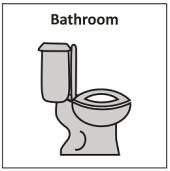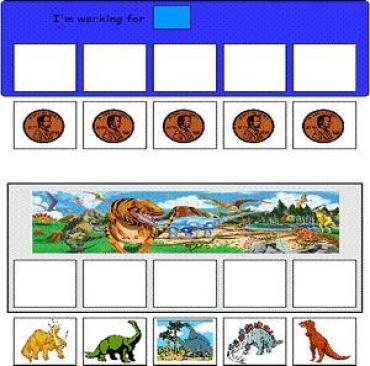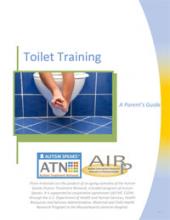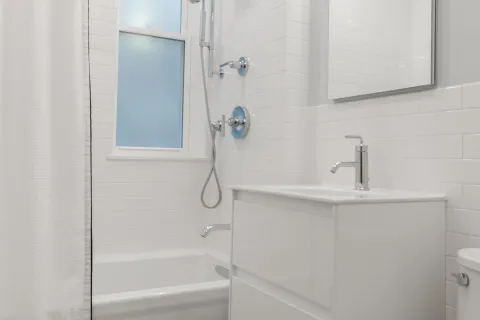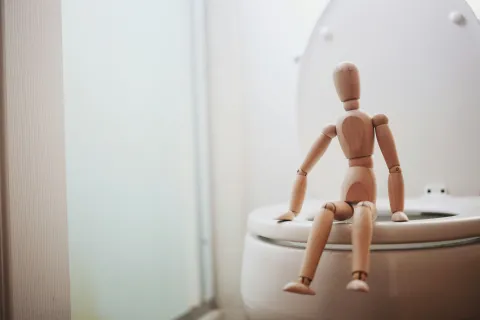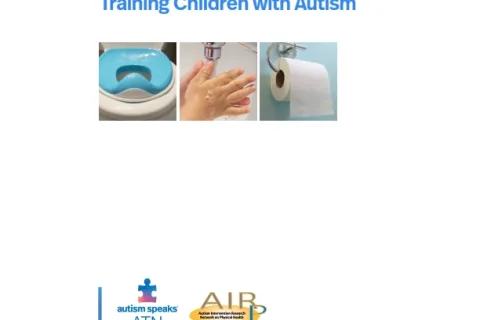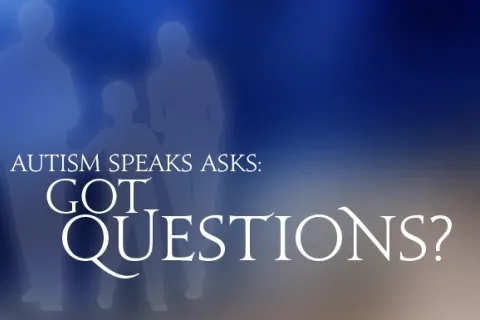Help for child with autism who forgets to use toilet when distracted
By Daniel W. Mruzek, Ph.D.“My son is 9, and he sometimes still pees and poops in his pants when he’s distracted by television or video games. He knows how to use the bathroom, but I also have trouble showing him how to properly wipe. I need help on how to go about this bathroom situation. I got frustrated last time, and I lost it. Please help me.”
Editor’s note: The following information is not meant to diagnose or treat and should not take the place of personal consultation, as appropriate, with a qualified healthcare professional and/or behavioral therapist.
Today’s “Got Questions?” answer is by psychologist and behavior analyst Daniel W. Mruzek, of the University of Rochester Medical Center. The medical center is one of 14 sites in the Autism Speaks Autism Treatment Network.
You raise two great questions! First, how can we help our children initiate trips to the bathroom, even when electronic games and favorite television programs consume their attention? Second, what are some strategies for teaching good toileting hygiene, especially wiping? Let’s look at these one at a time.
Accidents during screen-time
It’s common for children to get so consumed with their screen-time activities that they postpone impending trips to the bathroom for as long as possible. When bladder or bowel control is less than strong, this can lead to the messy consequences you describe!
It may be that your child becomes so distracted that he doesn’t register the pressure of a full bladder or the cramping of an impending bowel movement.
However, it’s also common for children to recognize these signals but nonetheless attempt to put off the trip to bathroom because they don’t want to stop the fun of their game or show.
This isn’t just a problem in the home. In my clinical practice, I’ve worked with children who have accidents in the classroom. Sometimes it’s because they don’t want to miss a fun activity such as circle time or recess. Other times they’re simply not recognizing the body cues when concentrating elsewhere.
And it’s not just children with autism. It’s also a common problem among children with attention deficit hyperactivity disorder (ADHD) and others who tend to miss or ignore body cues.
Here are some strategies you can try to help your child stop and use the toilet during highly stimulating activities:
- Make a trip to the bathroom a regular part of the “start-up” routine for these activities. So when your son asks to play a video game or watch a show, you let him know that he first needs to pee and try to poo.
-
During the activity, place a visual reminder such as a “bathroom” card where your son can see it. See the example at right, from the Autism Speaks ATN/AIR-P Visual Supports Tool Kit.
- Admittedly, it’s easy to “tune out” such reminders. So I suggest setting a timer and placing it next to – or just behind – the visual reminder. A good interval might be every half hour or so. You know your child best.
- Show your child how to pause a show or game and/or offer to pause it for him. Reassure him that it’s easy to continue the activity following each trip to the bathroom.
- Develop and maintain a clear “House Rule” regarding toilet breaks during screen time. For example, “We will pause our games and shows when we need to go to the toilet, so we don’t have accidents.” I suggest writing down and posting this rule in a visible spot such as near the TV or video game monitor. But take care to remove the reminder when company is over so as not to embarrass your son.
- Set up a reward system to encourage your son to follow the rule. This can be as simple as praising him when you see him taking a break to use the toilet. At the end of a successful screen activity with bathroom breaks, you might offer further reinforcement by allowing him to, say, choose an upcoming dessert or family activity. Make sure that you point out why he’s getting this special privilege and make it a celebration! A related option is a reward board, with tokens or stickers he can earn toward a larger reward. (See example below.)
- Learn to recognize the signs of an impending accident – so you can prompt him. Common examples include increased physical movement (e.g., rocking back-and-forth, squeezing his legs together, increased vocalizations, etc.). When you see these tell-tale signs, tell him he needs to use the bathroom before he can continue watching his show or playing his video game. Again, assure him that the game or show will be waiting on his return.
- When, despite best efforts, your son has an accident during screen time, end the screen time and ask him to change and clean. Though I understand it’s easy to get upset, it’s important to do this in a matter-of-fact way. In the same calm manner, let him know that the activity will not be available for a while. Perhaps for half a day or so. As parents, we need to remind ourselves not to scold or nag, as this probably won’t be helpful and may make things worse.
Improving Hygiene
I’m glad that you asked the related question about teaching your child how to wipe effectively after a bowel movement. This is a common concern that can present quite a challenge for a child who has autism.
I recommend A Parent’s Guide to Toilet Training, an Autism Speaks ATN/AIR-P tool kit.
In addition, I suggest approaching your son’s inadequate wiping as a “skill deficit.” You need to help your son learn and improve his skill as you would any other skill. As with hand washing and fastening clothing, toilet training is not complete until your child independently and effectively wipes himself.
Here is one step-by-step approach for teaching good wiping skills:
If your son isn’t yet wiping at all (you’re doing it for him) consider introducing (or re-introducing) a picture-based “task analysis” for bathroom trips. (See example at right.)
Include wiping as one of these steps. When you get to this step, use gentle hand-over-hand guidance to show him how to wipe. Praise his participation in this training and his subsequent, increasingly independent attempts.
This kind of training is called “shaping” behavior. It involves gradually decreasing the amount of help we provide while increasing the child’s independence. It can be very effective for teaching good wiping skills.
Be sure to show him how much toilet paper is enough for a thorough job and how much toilet paper is too much. It can help to invite him to count out a particular number of squares.
An additional strategy, if needed, is to have your child use toilet paper to practice wiping marker from a dry erase board paper.
Continued monitoring
Monitor his wiping and prompt him to take enough time and physical pressure to remove the feces from his bottom. Inspect his work and invite him to continue wiping with fresh toilet paper as needed. As with any skill, reward his efforts and successes (e.g. a clean bottom). This type of immediate feedback is a critical element in teaching effective wiping.
Once you are confident that your child can wipe effectively, encourage him to use the skill regularly – even when he’s in a hurry. It can help to give him this friendly reminder when you see him headed to the bathroom. That’s also a good time to remind him of whatever small reward you’re using to encourage thorough wiping. Again, check his work and provide immediate praise and any other reward you select.
If he has not wiped his bottom thoroughly, gently prompt him to “finish the job.” Again, there is no advantage to punishing poor wiping. Rather, use reward for success and gentle redirection to shape his skill.
I hope that you find these strategies helpful.


